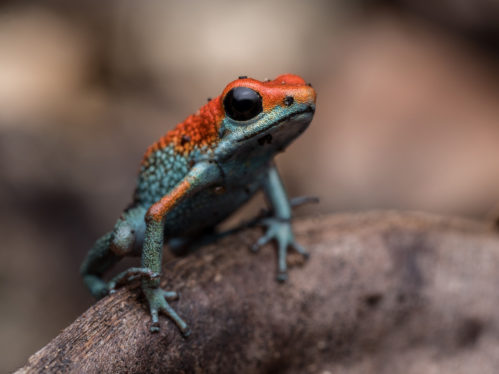
Enlarge / A Granular Poison Frog (Oophaga granulifera) sits on the edge of a leaf. (credit: Paul Osborne via Getty Images)
From the brightly colored poison frogs of South America to the prehistoric-looking newts of the Western US, the world is filled with beautiful, deadly amphibians. Just a few milligrams of the newt’s tetrodotoxin can be fatal, and some of those frogs make the most potent poisons found in nature.
In recent years, scientists have become increasingly interested in studying poisonous amphibians and are starting to unravel the mysteries they hold. How is it, for example, that the animals don’t poison themselves along with their would-be predators? And how exactly do the ones that ingest toxins in order to make themselves poisonous move those toxins from their stomachs to their skin?
Even the source of the poison is sometimes unclear. While some amphibians get their toxins from their diet, and many poisonous organisms get theirs from symbiotic bacteria living on their skin, still others may or may not make the toxins themselves — which has led scientists to rethink some classic hypotheses.
Read 31 remaining paragraphs | Comments




